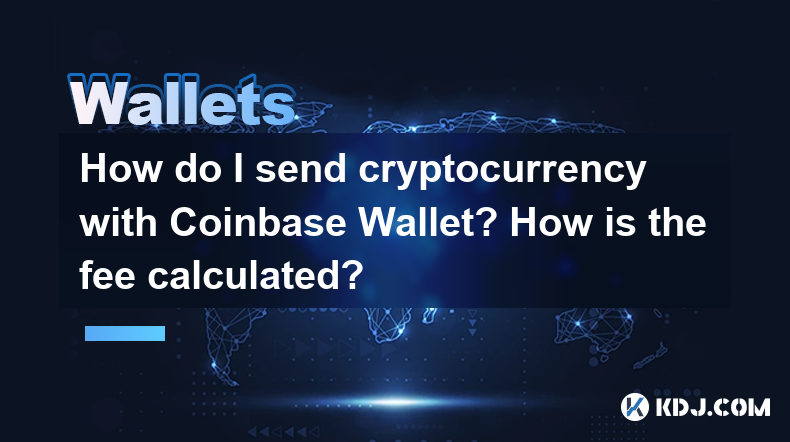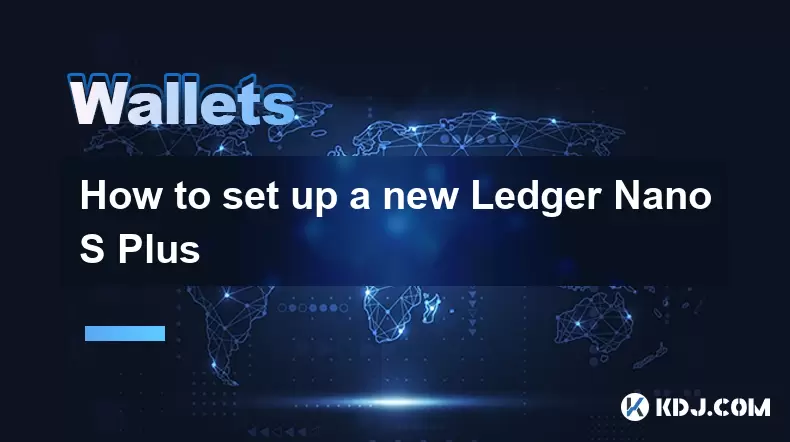-
 Bitcoin
Bitcoin $115100
1.27% -
 Ethereum
Ethereum $3675
2.71% -
 XRP
XRP $2.995
1.45% -
 Tether USDt
Tether USDt $1.000
0.02% -
 BNB
BNB $769.8
2.64% -
 Solana
Solana $168.0
3.25% -
 USDC
USDC $0.9999
-0.01% -
 TRON
TRON $0.3371
1.48% -
 Dogecoin
Dogecoin $0.2051
3.36% -
 Cardano
Cardano $0.7394
2.30% -
 Hyperliquid
Hyperliquid $38.15
0.42% -
 Stellar
Stellar $0.3966
-0.36% -
 Sui
Sui $3.486
2.93% -
 Chainlink
Chainlink $16.72
2.52% -
 Bitcoin Cash
Bitcoin Cash $568.0
4.36% -
 Hedera
Hedera $0.2440
2.59% -
 Ethena USDe
Ethena USDe $1.001
0.04% -
 Avalanche
Avalanche $22.16
2.06% -
 Litecoin
Litecoin $119.1
-0.73% -
 UNUS SED LEO
UNUS SED LEO $8.991
0.04% -
 Toncoin
Toncoin $3.232
-0.39% -
 Shiba Inu
Shiba Inu $0.00001233
2.82% -
 Uniswap
Uniswap $9.717
2.53% -
 Polkadot
Polkadot $3.664
1.85% -
 Dai
Dai $1.000
0.01% -
 Monero
Monero $281.2
-3.89% -
 Bitget Token
Bitget Token $4.350
1.55% -
 Cronos
Cronos $0.1428
5.07% -
 Pepe
Pepe $0.00001050
3.68% -
 Aave
Aave $262.3
3.54%
How do I send cryptocurrency with Coinbase Wallet? How is the fee calculated?
To send crypto via Coinbase Wallet, select your asset, enter the recipient's address, specify the amount, review fees, and confirm; transactions are irreversible, so double-check details.
May 05, 2025 at 02:35 pm

Sending cryptocurrency with Coinbase Wallet is a straightforward process, but it's important to understand the steps involved and how fees are calculated to ensure a smooth transaction. In this article, we will guide you through the process of sending cryptocurrency using Coinbase Wallet and explain how the fees are determined.
Accessing Coinbase Wallet
To begin, you need to access your Coinbase Wallet. This can be done through the Coinbase mobile app or the Coinbase Wallet extension on your browser.
- Open the Coinbase app on your mobile device or click on the Coinbase Wallet extension in your browser.
- Log in to your account if you haven't already done so. Ensure that you have the necessary security measures in place, such as two-factor authentication, to protect your account.
Selecting the Cryptocurrency to Send
Once you are logged in, you need to select the cryptocurrency you wish to send.
- Navigate to the 'Send' section within the Coinbase Wallet interface.
- Choose the cryptocurrency you want to send from the list of available assets in your wallet. This could be Bitcoin (BTC), Ethereum (ETH), or any other supported cryptocurrency.
Entering the Recipient's Address
After selecting the cryptocurrency, you need to enter the recipient's address.
- Enter the recipient's wallet address in the designated field. This address is a unique string of characters that identifies the recipient's wallet. Double-check the address to avoid sending funds to the wrong wallet, as cryptocurrency transactions are irreversible.
- If you are sending to a contact saved in your Coinbase Wallet, you can select the contact from your list instead of manually entering the address.
Specifying the Amount to Send
Next, you need to specify the amount of cryptocurrency you want to send.
- Enter the amount you wish to send. You can input this in the cryptocurrency's native unit (e.g., BTC for Bitcoin) or in your local currency, depending on the settings in your Coinbase Wallet.
- Review the total amount to be sent, including any fees that will be deducted from your wallet.
Reviewing and Confirming the Transaction
Before finalizing the transaction, it's crucial to review all the details.
- Check the recipient's address again to ensure it is correct.
- Verify the amount you are sending and the associated fees.
- Once you are satisfied with all the details, click on the 'Send' button to initiate the transaction.
Understanding Fee Calculation
Fees are an important aspect of sending cryptocurrency, and understanding how they are calculated can help you manage your transactions more effectively.
- Network Fees: These are fees charged by the blockchain network to process your transaction. The fee amount depends on the current network congestion and the priority you set for your transaction. Higher fees result in faster transaction processing, while lower fees may lead to longer wait times.
- Coinbase Wallet Fees: Coinbase Wallet may charge a small fee for using their service. This fee is typically a percentage of the transaction amount and is used to cover operational costs. Check the fee structure on the Coinbase website or within the app to understand the exact amount you will be charged.
Monitoring the Transaction
After sending the cryptocurrency, you can monitor the transaction to ensure it is processed successfully.
- Track the transaction using the transaction ID (TXID) provided by Coinbase Wallet. You can use blockchain explorers like Blockchain.com or Etherscan to check the status of your transaction.
- Wait for the transaction to be confirmed on the blockchain. The number of confirmations required varies depending on the cryptocurrency, but typically, a few confirmations are sufficient to consider the transaction complete.
Frequently Asked Questions
Q: Can I cancel a transaction after it has been sent?
A: Once a cryptocurrency transaction is sent, it cannot be canceled or reversed. It's crucial to double-check all details before confirming the transaction.
Q: How long does it take for a transaction to be processed?
A: The processing time depends on the cryptocurrency and the network congestion. Bitcoin transactions can take anywhere from 10 minutes to several hours, while Ethereum transactions are usually faster, taking around 15 minutes to an hour.
Q: What should I do if I send cryptocurrency to the wrong address?
A: Unfortunately, if you send cryptocurrency to the wrong address, there is no way to retrieve it. Always double-check the recipient's address before sending.
Q: Can I send cryptocurrency to someone who doesn't have a Coinbase Wallet?
A: Yes, you can send cryptocurrency to any valid wallet address, regardless of whether the recipient uses Coinbase Wallet or another service. Just ensure you have the correct address.
Disclaimer:info@kdj.com
The information provided is not trading advice. kdj.com does not assume any responsibility for any investments made based on the information provided in this article. Cryptocurrencies are highly volatile and it is highly recommended that you invest with caution after thorough research!
If you believe that the content used on this website infringes your copyright, please contact us immediately (info@kdj.com) and we will delete it promptly.
- BlockDAG, Litecoin, and Cardano: Charting the Course in Crypto's Dynamic Waters
- 2025-08-07 09:09:06
- Fireverse Token: Igniting a Musical Revolution in Web3
- 2025-08-07 08:27:45
- Ethereum, L2 Withdrawals, and Decentralization: A New Yorker's Take
- 2025-08-07 08:32:33
- Avalanche vs. Ruvi AI: Daily Sales Tell a Story of Crypto Disruption
- 2025-08-07 06:29:35
- DeSoc: The Crypto to Buy Now for a Decentralized Future (and Maybe 43x Gains!)
- 2025-08-07 06:50:16
- Arctic Pablo Coin: Riding the Meme Coin Wave with a Deflationary Twist
- 2025-08-07 07:18:13
Related knowledge

How to add Fantom network to MetaMask
Aug 07,2025 at 08:21am
Understanding the Fantom Network and MetaMask IntegrationThe Fantom network is a high-performance, scalable, and secure blockchain platform designed f...

How to export your transaction history from Coinbase Wallet
Aug 07,2025 at 06:50am
Understanding Coinbase Wallet and Transaction HistoryCoinbase Wallet is a self-custodial cryptocurrency wallet that allows users to store, manage, and...

How to export your transaction history from Coinbase Wallet
Aug 07,2025 at 08:49am
Understanding Coinbase Wallet and Transaction HistoryCoinbase Wallet is a self-custodial cryptocurrency wallet that allows users to store, manage, and...

How to set up a new Ledger Nano S Plus
Aug 07,2025 at 06:01am
Unboxing and Initial InspectionWhen you receive your Ledger Nano S Plus, begin by carefully unboxing the package. Inside, you should find the Ledger N...

How to receive Polkadot (DOT) in your hardware wallet
Aug 07,2025 at 07:03am
Understanding Polkadot (DOT) and Hardware Wallet CompatibilityReceiving Polkadot (DOT) into a hardware wallet begins with understanding the ecosystem ...

How to receive NFTs in your Ledger Nano X
Aug 07,2025 at 02:45am
Understanding NFTs and Ledger Nano X CompatibilityNFTs (Non-Fungible Tokens) are unique digital assets stored on a blockchain, typically on networks l...

How to add Fantom network to MetaMask
Aug 07,2025 at 08:21am
Understanding the Fantom Network and MetaMask IntegrationThe Fantom network is a high-performance, scalable, and secure blockchain platform designed f...

How to export your transaction history from Coinbase Wallet
Aug 07,2025 at 06:50am
Understanding Coinbase Wallet and Transaction HistoryCoinbase Wallet is a self-custodial cryptocurrency wallet that allows users to store, manage, and...

How to export your transaction history from Coinbase Wallet
Aug 07,2025 at 08:49am
Understanding Coinbase Wallet and Transaction HistoryCoinbase Wallet is a self-custodial cryptocurrency wallet that allows users to store, manage, and...

How to set up a new Ledger Nano S Plus
Aug 07,2025 at 06:01am
Unboxing and Initial InspectionWhen you receive your Ledger Nano S Plus, begin by carefully unboxing the package. Inside, you should find the Ledger N...

How to receive Polkadot (DOT) in your hardware wallet
Aug 07,2025 at 07:03am
Understanding Polkadot (DOT) and Hardware Wallet CompatibilityReceiving Polkadot (DOT) into a hardware wallet begins with understanding the ecosystem ...

How to receive NFTs in your Ledger Nano X
Aug 07,2025 at 02:45am
Understanding NFTs and Ledger Nano X CompatibilityNFTs (Non-Fungible Tokens) are unique digital assets stored on a blockchain, typically on networks l...
See all articles

























































































